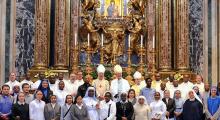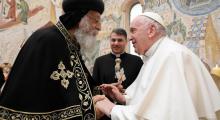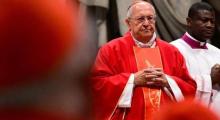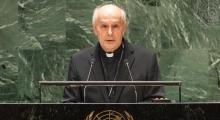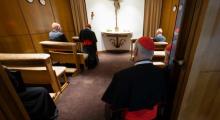Issued by the Catholic Center for Studies and Media - Jordan. Editor-in-chief Fr. Rif'at Bader - موقع أبونا abouna.org
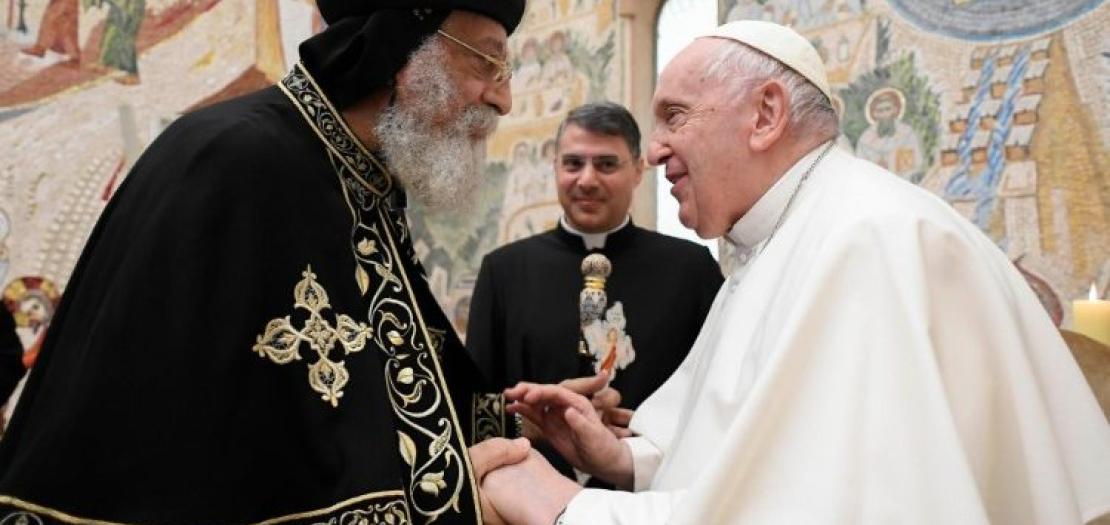
Rifts between the different Christian Churches date back centuries. But rather than give in to unhealthy precedent, Pope Francis used his time in the papacy to build upon the ecumenical foundation of his predecessors to bridge the gap.
From introducing himself as Bishop of Rome rather than Pope upon his election to becoming the first Pope to make a visit with Anglican and Reformed leaders, Pope Francis repeatedly expressed his solidarity with different Churches through his words and actions over the last twelve years.
A bishop of Rome from the ends of the Earth
From the moment of his election in 2013, Pope Francis’ papacy took on an ecumenical focus. During his first greeting to crowds in St. Peter’s Square, he referred to himself as the “Bishop of Rome” rather than the Pope, and this was listed as his title in the Vatican yearbook for 2013.
Historically, the title “Bishop of Rome” signified a high position among the five Patriarchates, without placing the Bishop of Rome over the Eastern Patriarchates.
Pope Francis’ use of this title was seen as respecting the papal position in relation to the leaders of other Christian Churches.
Easter: A shared date
Almost a decade into his papacy, in 2022, Pope Francis reintroduced the idea of a shared date for the celebration of Easter for the Orthodox and Catholic Churches. In a meeting with Mar Awa III, Catholicos-Patriarch of the Assyrian Church of the East, the Pope said, “I want to say—indeed, to repeat—what Pope Saint Paul VI said in his day: We are ready to accept any proposal that is made together.”
During the Second Vatican Council, Pope Paul VI first proposed a set date for Easter to be held on a Sunday in April. About 50 years later, at Pope Francis’ behest, the topic once again became the center of discussion.
During the Week of Prayer for Christian Unity in 2025, the Pope reaffirmed the Catholic Church’s willingness to accept “the date that everyone wants: a date of unity.”
Seeing that the date of Easter for both the Catholic and Orthodox Churches aligned on the same day in 2025, Pope Francis called on both Churches to make a definitive effort towards unity.
His final celebration of Easter, on April 20, 2025, was remarkable for marking the rare occasion that all Christians celebrated the highest Christian feast on the same day, as the Gregorian and Julian calendars aligned.
“I renew my appeal that this coincidence may serve as an appeal to all Christians to take a decisive step forward toward unity around a common date for Easter.” - Pope Francis”
1,700 years of ecumenism
The year 2025 also marks another major milestone in the relationship between the two Churches: the 1,700th anniversary of the First Ecumenical Council of Nicaea. Pope Francis’ plan was to bring Catholics and Orthodox together to celebrate the historic date of the Council that produced the Nicene Creed, which all Christians profess.
During the delegation of the Ecumenical Patriarchate’s visit to Rome in June 2024, Pope Francis expressed his desire to travel to Nicaea for the anniversary. He also extended an invitation to the Orthodox Church to visit the Eternal City during the Jubilee Year of Hope – as 2025 also marks their Jubilee Year.
At one point, the advisor to the Ecumenical Patriarch of Constantinople, Nikos Tzoitis, described Pope Francis’ emphasis on synodality as a motivating factor behind these gestures of ecumenism.
The Pope, the Patriarch, the Moderator, and the Archbishop
Over the final years of his papacy, Pope Francis held several meetings with Orthodox leaders: the Holy Synod of the Malankara Mar Thoma Syrian Church; Ignatius Aphrem II, the Syrian Orthodox Patriarch of Antioch; and, Pope Tawadros II, the Patriarch of Alexandria and head of the Coptic Orthodox Church.
His encounter with the latter marked a celebration of the 50th anniversary of Coptic-Catholic friendship—highlighting the need to continue this relationship.
"Tawadros came to see me for the first time on May 10 ten years ago and proposed to celebrate every May 10 the Coptic-Catholic Friendship Day, which we have been celebrating every year since that time. We call each other on the phone, send greetings and remain good brothers." - Pope Francis
Yet, he did not limit his ecumenical work to meetings. In 2023, Pope Francis made a much-anticipated and long-desired visit to South Sudan.
The visit was dubbed an Ecumenical Peace Pilgrimage as he traveled with “two brothers” – the Archbishop of Canterbury, Justin Welby, and the Moderator of the General Assembly of the Church of Scotland, Rt. Rev. Iain Greenshields. Pope Francis thus became the first Pope to ever make such a visit with Anglican and Reformed leaders.
While the work of Christian unity is not yet finished, Pope Francis’ 12-year pontificate highlighted the important task of cultivating fruitful relationships among all Christian brothers and sisters.


